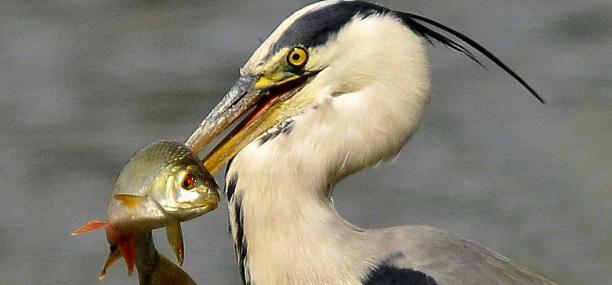A tall, often solitary bird, the Grey Heron is one of Britain's most familiar birds. It feeds mainly on fish, but also eats small mammals (even Moles!), waterbirds (sometimes up to the size of a Coot) and Crayfish. It is often seen standing stock-still in the shallow waters of lakes, rivers and ponds, patiently hunting fish flitting about below the surface. It will visit gardens with ornamental ponds, looking for an easy meal.
The survival of our waterbirds is threatened by the loss and degradation of many of our wetland habitats. The Wildlife Trusts manage many wetland nature reserves for the benefit of the wildlife they support. You can help by supporting your local Trust and becoming a member; you'll find out about exciting wildlife happenings, events on your doorstep and volunteering opportunities, and be helping local wildlife along the way.
